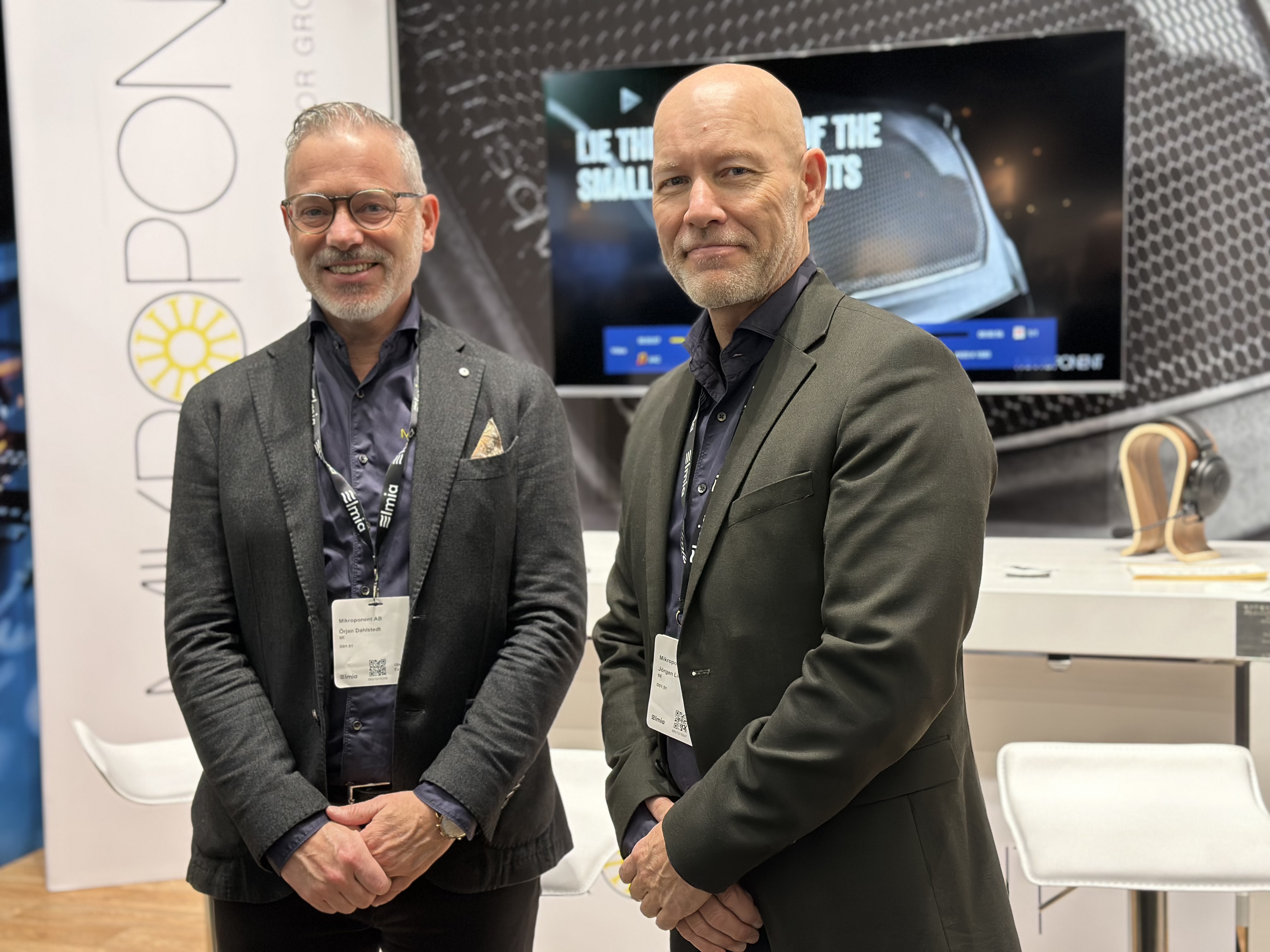Mikroponent grows with the defence industry

– This trade fair is extremely important to us. It's the highlight of the year. All our existing customers know that we are here, and we always meet a handful of new customers every year, says Örjan Dahlstedt, Sales and Marketing.
Jörgen Lindqvist, CEO, continues:
– Elmia Subcontractor is a very exciting platform where we also meet suppliers and have made contacts that have led to company acquisitions.
The defence supply chain is growing
Värnamo-based Mikroponent has established itself as an important supplier to the defence industry. This in turn led to the company becoming part of the Scandinavian Astor Group defence group two years ago. Its cutting-edge expertise in etching and laser cutting has been crucial.
– We have built up a good reputation, says Örjan Dahlstedt.
When the Swedish defence industry upgrades, new demands are placed on Swedish industry – and, above all, new opportunities open up.
– When demand increases as dramatically as it has, the defence industry must find ways to expand its capacity. We have increased and broadened our offering, and I'm sure others working in this market are doing the same, says Jörgen Lindqvist.
Etching as a strategic strength
At the same time, qualifying as a supplier to the defence industry is a tough nut to crack. What does it take to succeed?
– You need to have the hygiene factors in place: orderly processes, quality assurance, information security, traceability and continuity. And you need to have something that is a little unique, something that is in demand,” says Jörgen.
In Mikroponent's case, it is their expertise in etching that stands out. A skill that has been ‘somewhat forgotten in the hustle and bustle of everyday life,’ notes Örjan:
– We are talking about a very high level of detail and complexity. Here, you work with tolerances of plus/minus a few hundredths. Some applications are impossible to manufacture in any other way.’